| ABOUT
US |
| Medical
Instrumentation Laboratory was established in 2008 at the Department of
Biomedical Engineering at Technological Educational Institute of
Athens. The laboratory is mainly activated in the field
of Molecular Imaging using Nuclear Medicine Techniques. Side activities
include other fields of Medical Imaging and Biomedical
Enginnering. More specifically: |
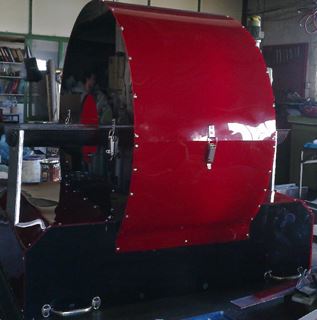 We develop compact imaging systems for preclinical applications. A dedicated
SPECT system was constructed and installed at the
Medical School of University of Patras in 2013. Currently a dedicated mouse sized animal SPECT/PET/CT is under
development in the framework of a National Excellence project. Finally,
a gamma probe has been designed and is beeing built. The group
coordinates a COST Action on PET/MRI technology, tracers and applications and is participating in the FP7 TRIMAGE project, which aims to develop a multimodal PET/MRI/EEG prototype. We develop compact imaging systems for preclinical applications. A dedicated
SPECT system was constructed and installed at the
Medical School of University of Patras in 2013. Currently a dedicated mouse sized animal SPECT/PET/CT is under
development in the framework of a National Excellence project. Finally,
a gamma probe has been designed and is beeing built. The group
coordinates a COST Action on PET/MRI technology, tracers and applications and is participating in the FP7 TRIMAGE project, which aims to develop a multimodal PET/MRI/EEG prototype. |
- Evaluation of detector components
 Our
group is working on the evaluation of several system components such as
Silicon Photomultipliers (SiPMs), Position Sensitive Photomultiplier
Tubes (PSPMTs), crystals and collimators. In addition, we study/develop
data acquisition and processing methods based on FPGAs, fast ADCs etc. We focus on signal
multiplexing methods, in order to provide low cost readout systems and
our recent work is maninly focused on MR compatible SiPMs readout. Our
group is working on the evaluation of several system components such as
Silicon Photomultipliers (SiPMs), Position Sensitive Photomultiplier
Tubes (PSPMTs), crystals and collimators. In addition, we study/develop
data acquisition and processing methods based on FPGAs, fast ADCs etc. We focus on signal
multiplexing methods, in order to provide low cost readout systems and
our recent work is maninly focused on MR compatible SiPMs readout. |
 We provide
imaging systems suitable for the study of radiolabelled nanoparticles,
new radiopharmaceuticals and
other biological processes in small animals. The group
hosts unique SPECT and PET systems on national and regional level. Our group
has participated in FP7 NANOTHER project and coordinates FP7 ONCONANOBBB
project, both related to nanoparticles development
for targeted drug delivery and diagnosis. Our imaging platform has been
used by a number of groups internationally and on national level. We provide
imaging systems suitable for the study of radiolabelled nanoparticles,
new radiopharmaceuticals and
other biological processes in small animals. The group
hosts unique SPECT and PET systems on national and regional level. Our group
has participated in FP7 NANOTHER project and coordinates FP7 ONCONANOBBB
project, both related to nanoparticles development
for targeted drug delivery and diagnosis. Our imaging platform has been
used by a number of groups internationally and on national level. |
- Nanoparticle research and hyperthermia
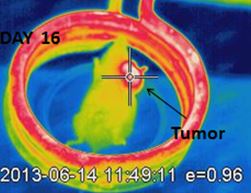 We are using our experience in engineering in order to provide
imaging and measuring solutions in nanotechnology. We perform
hyperthermia studies in small mice, as well as assess non invassive
temperature measurement techniques during hyperthermia. Finally we are
developing imaging systems, suitable for performing imaging during
magnetic induced hyperthermia. Our group participates in a COST Action
related to
Theragnostics Imaging and Therapy and to Multifunctional Nanoparticles for Magnetic Hyperthermia and Indirect Radiation Therapyrthermia. We are using our experience in engineering in order to provide
imaging and measuring solutions in nanotechnology. We perform
hyperthermia studies in small mice, as well as assess non invassive
temperature measurement techniques during hyperthermia. Finally we are
developing imaging systems, suitable for performing imaging during
magnetic induced hyperthermia. Our group participates in a COST Action
related to
Theragnostics Imaging and Therapy and to Multifunctional Nanoparticles for Magnetic Hyperthermia and Indirect Radiation Therapyrthermia. |
 We are members of the openGATE colalboration, since 2005 and participate in
the development/validation of GATE (Geant4 Application for Tomographic
Emission) opensource software. We have been using GATE
in a large number of applications including a) Simulation of SPECT/PET
imaging systems, b) dosimetry in Nuclear Medicine and other therapeutic
applications and c) optimization of clinical diagnostic and
therapeutic protocols. We are members of the openGATE colalboration, since 2005 and participate in
the development/validation of GATE (Geant4 Application for Tomographic
Emission) opensource software. We have been using GATE
in a large number of applications including a) Simulation of SPECT/PET
imaging systems, b) dosimetry in Nuclear Medicine and other therapeutic
applications and c) optimization of clinical diagnostic and
therapeutic protocols. |
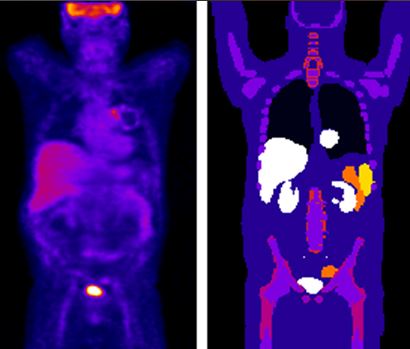 We
have developed an
algorithm and an opensource toolkit for dose
calculation in radionuclide dosimetry. We optimize this toolkit in
order to take into account patient anatomical information (CT). Using
GATE we have calculated the dose kernels for several radioisotopes and
media. In terms of a national project we optimize the existing dose
calculation algorithm to include patient specific information. Recently
we have extended our dosimetry work in brachytherapy and radiotherapy. We
have developed an
algorithm and an opensource toolkit for dose
calculation in radionuclide dosimetry. We optimize this toolkit in
order to take into account patient anatomical information (CT). Using
GATE we have calculated the dose kernels for several radioisotopes and
media. In terms of a national project we optimize the existing dose
calculation algorithm to include patient specific information. Recently
we have extended our dosimetry work in brachytherapy and radiotherapy. |
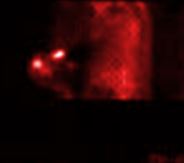 A
dedicated „-probe suitable for scintimammography and sentinel lymph
node scanning has been designed for optimized spatial resolution and
sensitivity. The probe has small size and low wieght and is
currently under construction. We are studying the optimization of breast scintimammography
and SPECT imaging by exploiting dedicated imaging
systems, using simple and computational phantoms, as well as
Monte Carlo simulation tools. A
dedicated „-probe suitable for scintimammography and sentinel lymph
node scanning has been designed for optimized spatial resolution and
sensitivity. The probe has small size and low wieght and is
currently under construction. We are studying the optimization of breast scintimammography
and SPECT imaging by exploiting dedicated imaging
systems, using simple and computational phantoms, as well as
Monte Carlo simulation tools. |
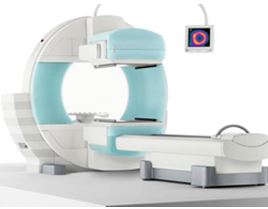 An opensource software for the
iterative reconstruction of SPECT images (QSPECT) has been developed
and it can be freely downloaded from our website. Additional research
activity on SPECT/CT attenuation correction is carried out. We can also
model existing clinical and preclinical imaging systems and optimize
acquisition and processing protocols. We
have participated in several SPECT related projects and networks, thus
we can provide consultancy services for SPECT equipment selection
and operation. An opensource software for the
iterative reconstruction of SPECT images (QSPECT) has been developed
and it can be freely downloaded from our website. Additional research
activity on SPECT/CT attenuation correction is carried out. We can also
model existing clinical and preclinical imaging systems and optimize
acquisition and processing protocols. We
have participated in several SPECT related projects and networks, thus
we can provide consultancy services for SPECT equipment selection
and operation. |
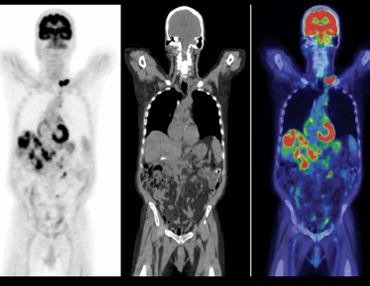 We
study dose optimization in PET, using Monte Carlo simulation techniques. In
addition, we can support the modeling of clinical and preclinical PET systems, as well as image reconstruction
and data processing tasks. We host a prototype —Ň‘system, suitable for imaging small mice and over the past five years he have participated in several PET related projects and networoks. As a consequence, we can provide consultancy services for
PET equipment selection and operation. We
study dose optimization in PET, using Monte Carlo simulation techniques. In
addition, we can support the modeling of clinical and preclinical PET systems, as well as image reconstruction
and data processing tasks. We host a prototype —Ň‘system, suitable for imaging small mice and over the past five years he have participated in several PET related projects and networoks. As a consequence, we can provide consultancy services for
PET equipment selection and operation. |
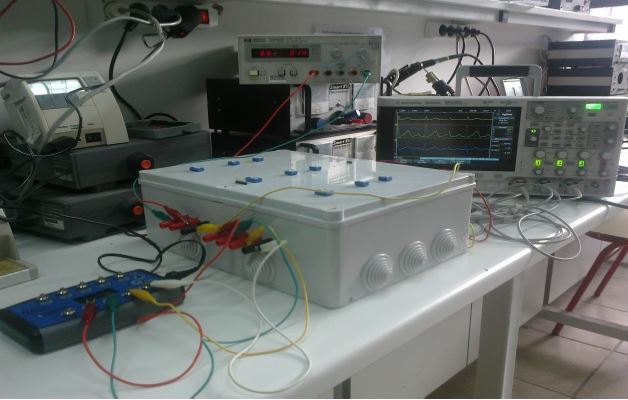 Signal
readout, amplification and processing, as well as data acquisition
techniques that have been applied in imaging systems are now being
exploited in other medical applications and instruments. Our group is
developing at the
moment an electrocardiograph, which records 12 leads and transmits data
via Bluetooth to a mobile phone or computer .
Recent work includes development of other medical devices by exploiting
new sensors and microprocessors. Signal
readout, amplification and processing, as well as data acquisition
techniques that have been applied in imaging systems are now being
exploited in other medical applications and instruments. Our group is
developing at the
moment an electrocardiograph, which records 12 leads and transmits data
via Bluetooth to a mobile phone or computer .
Recent work includes development of other medical devices by exploiting
new sensors and microprocessors. |
 The
group has extended its activities towards education. We are currently
developing in terms of a National Project a Virtual Biomedical
Engineering Laboratory, where 10 medical instruments, as well as the
physical principles related to their operation have been implemented in
a Virtual environment. The Virtual Laboratory will be part of our
Departments courses, but will also be accessible to other
interested students and scientists via web. The
group has extended its activities towards education. We are currently
developing in terms of a National Project a Virtual Biomedical
Engineering Laboratory, where 10 medical instruments, as well as the
physical principles related to their operation have been implemented in
a Virtual environment. The Virtual Laboratory will be part of our
Departments courses, but will also be accessible to other
interested students and scientists via web. |
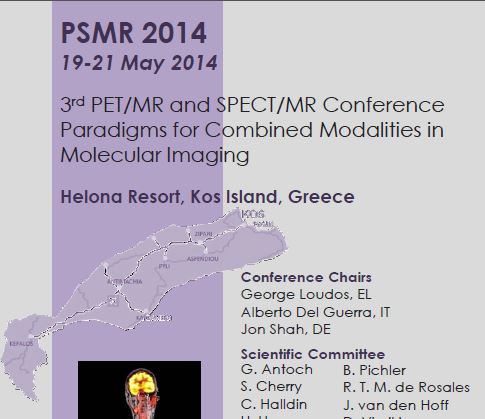 Since 2009 we have been very active in the organization of various local and international events, including the series of PSMR
conferences on PET/MR and SPECT/MR technology, the series of MEDAMI
(Mediterranean Thematic Workshops on Molecular Imaging), the 1st International School on PET/MR, several
workshops, project and network (such as COST and openGATE)
meetings. Those events have been organized in Greece as well as in
other countries. Since 2009 we have been very active in the organization of various local and international events, including the series of PSMR
conferences on PET/MR and SPECT/MR technology, the series of MEDAMI
(Mediterranean Thematic Workshops on Molecular Imaging), the 1st International School on PET/MR, several
workshops, project and network (such as COST and openGATE)
meetings. Those events have been organized in Greece as well as in
other countries. |
|
For your correspondence:
George Loudos
Assistant Professor,
Department of Biomedical Engineering,
Technological Educational Institute of Athens,
Ag. Spyridonos Street 28, Egaleo, 12210, Athens, Greece
e-mail: gloudos@teiath.gr
Tel: (+30) 6947-233203 (cell)
(+30) 210-5385376 (work)
Fax:
(+30) 210-5385302 |